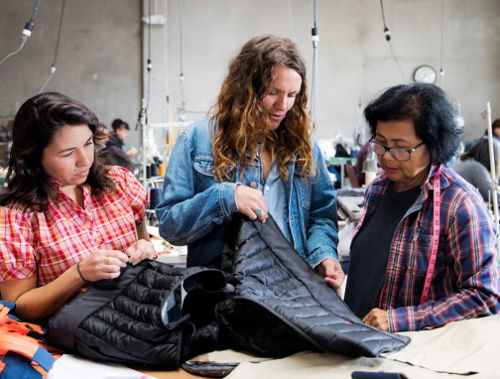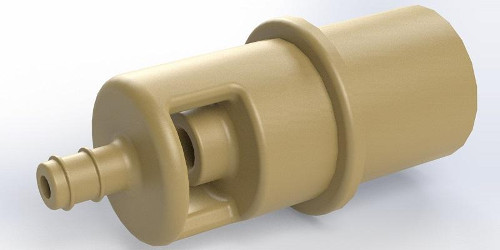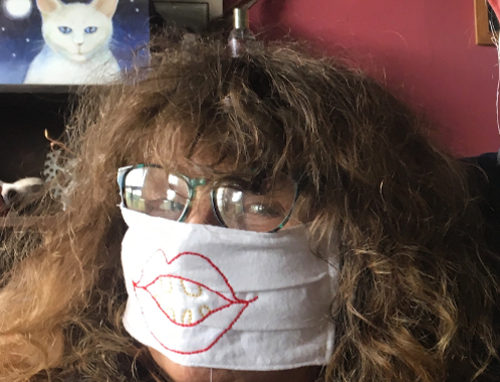Stay at work - Innovate - Save Lives
Angus Soutar
Innovation is about making changes, bringing in something new. Discussion on the topic often turns to grappling with problems like complexity in modern society, long supply chains and fraught relations between countries and trade zones. Authorities view "Research and Development" as the domain of highly specialised people, working in expensive surroundings, with expensive equipment and expensive IT, often in conditions of great secrecy.
In a circular argument, innovation is best be done by governments and large corporations, because they are the only ones who can marshal these expensive resources. Under the current orthodoxy, governments often abdicate responsibility to corporations, who in return demand property rights and exclusivity, even when receiving public money. This, in turn, makes "innovation" even more remote and centralised. The spiral turns and the results include public suspicion and a lack of accountability. Perhaps the most important outcome is the resulting waste: of energy, materials and, sometimes, people's lives.
Permaculture rejects all this and asserts that innovation cannot be "owned", it is our birthright, it's what we humans do. Real freedom is being able to change things when they are not working properly. Here at The Northern School we celebrate good design when we see it, whether it is labelled "Permaculture" or not. So, I include two little reports for our readers here, for the sole reason that I was delighted to hear about them.
It's my experience that some of the best innovation comes from people who are experienced workers in their field, observant and taking time out from their busy days to reflect on how we can all do things better. Experience with the recent pandemic has, once more, demonstrated that attempts at centralised control rarely work in a fast-changing world. Whereas bringing innovation back into the home and the workplace gets round many of our current problems.
This approach does not deny the benefits of working with private companies and large institutions such as universities. Partnerships can unlock valuable resources, but I would argue that they work best when the focus is on human-scale initiatives in their home region. I hope you like the following studies as much as I do.
Suay Sew Shop
Community mask coalition
Suay is a small, dynamic, Los Angeles garment company committed to a culture of recovery and re-use. Its day-to-day business is itself inspirational - they promise that their products are made with at least 85 per cent post-consumer waste. Now they have taken their mission to a new level by initiating the Community Mask Coalition as their response to the current virus pandemic.
Suay co-owners, Lindsay Medoff and Heather Pavlu, joined up with designer Chloe Schempf as soon as the crisis hit California. They were concerned about the lack of face masks for key workers and appalled by the advice of the authorities that health workers should use cotton bandanas as a last resort. (After all, the women are material specialists, they have a great knowledge and "feel" for fabrics and their uses). The Suay team were certain that cotton was not the best material for filtering virus-laden droplets out of air and they set about finding more effective materials.
 |
 |
They selected a range of locally available and affordable fabrics as likely candidates - materials ranging from coffee filters and Swiffer dusting clothes to window blinds and even fabrics used in engineering, oil refineries and medical equipment.
Suay then invested in a laboratory tester - a $1,400 Grainger particulate-counter device, capable of measuring filtration down to 0.3 microns. This allowed them to evaluate materials up to the N95 (the US version of FFP3) standard for facemasks. This requires that 95 per cent of particles that are 0.3 microns or larger are filtered out (effectively the "gold standard" for most PPE). The bulk of the masks to this standard are made China and they have been in critically short supply in the USA and UK.
The team then spent 10 days using the Grainger machine to test every fabric they could get their hands on, specifically seeking out a material that was easy to buy, had good filtration, but was also breathable. Some extremely effective filter materials were rejected because it was difficult to breathe through them.
US brands of "blue shop towels", used extensively in car repair workshops, performed well in the tests. These cloths are used for general cleaning up, polishing car bodywork etc. (They are available at motor accessory dealers in the UK). The cloths are made of a polyester hydro-knit, an absorbent material that's particularly good at cleaning up oil, grease and other liquid spills. The "ToolBox" and "Zep" brands were found to be particularly effective as filters. (It would be interesting to see if there are cleaning cloths of a similar weave that would fit the bill here the UK).
The design team adopted a surgical mask pattern that employs outer cotton layers for comfort but includes a dense-weave inner layer to give good filtration. Following the evaluation stage, they chose a cotton mask lined with two blue shop towels. They showed that this enhanced the mask's filtration rate up to 93 per cent when it came to 0.3 micron-sized particles, whereas cotton masks alone filtered only 60 per cent particles at that size (which is important for trapping aerosol dispersions, such as those caused by sneezes).
As the design progressed, the team continued to concentrate on the use of readily available materials for detailing. Getting a tight fit is important, as is the adjustment for different sizes of faces. The wire nose clip is an important component for this function, final designs included simple floral wire and twist tie options.
Production is completely scalable. However, Suay are concentrating on supplying their local hospitals and are encouraging a global community response by publishing the results of their extensive research and prototyping, freely available in the style of "open source". You can join in the response and help your community by downloading their design and patterns.
Sources
Peak Prosperity Chris Martenson's excellent daily video series on the "honey badger virus" on Youtube, early April 2020
Business Insider article by Julie Bort 2 April 2020
Saving lives in Bradford
(and maybe everywhere?)
During the early stages of the current pandemic, doctors observed that the accepted treatment for severe pneumonia - invasive mechanical ventilators - could do more harm than good for those suffering from the novel virus. In any case, ventilators were expensive, in short supply, and each case demands Intensive Care which soaks up a lot of scarce hospital resources.
Dr Tom Lawton, Consultant in Critical Care and Anaesthesia at Bradford Royal Infirmary, picked up on experiences from other countries, including China, where clinicians were finding more positive results with Continuous Positive Airway Pressure (CPAP) devices. “We are already seeing that treating Covid-19 patients with CPAP can help avoid the need for ventilators and intensive care; the key is to do this in a resource-efficient way."
Dr Lawton went on a mission to find CPAP machines. Very soon soon he got 100 from a local manufacturer. And a local supplier he contacted said that they had 2000 available.
Looking at these in a hospital environment, they needed to be modified to adapt to the oxygen distribution system. However, they use much less than the standard hospital ventilators, which was very important since the there were concerns about the load on the existing oxygen system at BRI. Speedy support came from local companies and university departments.
In a further development. Dr Lawton also worked with Leeds University and Leeds Hospitals Trust on the Venturi Valve - a simple component with no moving parts that could be attached to the hospital oxygen supply, or even to an individual cylinder. The other end connects to the tubing that goes to the patient's oxygen mask. This further simplifies the equipment required. The redesigned valve can be made rapidly by a 3D printer. Not only does it deliver an increased flow of oxygen to the patient, it also raises the pressure of that flow, opening the tiny air sacs in the lungs that are damaged by the virus and allowing oxygen to get into the body.
 |
 |
“Devices like this venturi valve could be a key to expanding the use of CPAP across the globe" says Dr Lawton. Another team member, Dr Pete Culmer, of the School of Mechanical Engineering at Leeds University, summarised the their approach. “Our work has focused on investigating more rapid ways of getting life-saving technology to the side of patients as the pandemic spreads. Taking established technology and re-purposing it means there is a greater chance that we can make real our solutions in a timely and effective way.”
It will be interesting to compare the efficacy of these innovations from Leeds-Bradford with the high-profile ventilator projects from the likes of the Formula 1 teams and James Dyson, which were announced with accompanying fanfares during the early stages of the pandemic. I suspect that the Yorkshire collaborations will prove much more cost-effective and more transferable, as well as providing good clinical outcomes everywhere.
“We give them the third best to go on with, The second best comes too late, the best never comes at all”
Robert Watson-Watt
Sources:
Bradford Telegraph and Argus 7th April 2020
"The NHS Front Line" BBC Radio 4 6th April 2020
TechExplorist article by Franjal Mehar 24 April 2020
Yorkshire Post by Abbey Maclure 8 April 2020
Leeds University Technology News 4 April 2020
Futures Edge Twitter account
 |
| Mask hand-made in Yorkshire by our very own Georgia Firzgerald |
 |